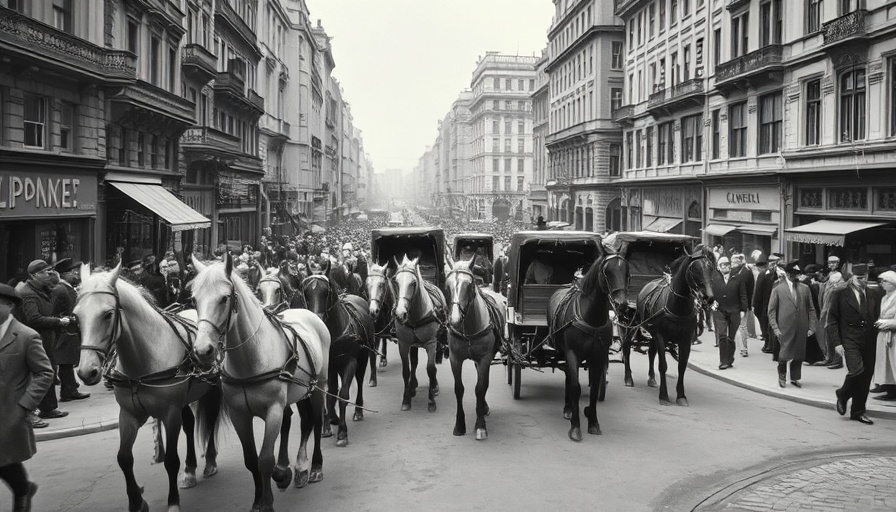
A Glimpse into America's Past: Life 150 Years Ago
The year 1870 marked a pivotal moment in American history, characterized by dramatic cultural, economic, and technological changes. As the United States was ushering in the Second Industrial Revolution, the face of everyday life began to shift significantly. Unlike today, where a plethora of business trends shape our environment, the 1870s saw families navigating a world that was increasingly urban and industrial.
From Farms to Cities: A Changing Landscape
The movement from farmland to urban centers transformed family dynamics, as millions left rural life in search of jobs in bustling factories. This shift created crowded living conditions, particularly in cities like New York, where tenements became the norm. These housing developments often housed entire families in cramped spaces, leading to health issues and unsafe living environments—a stark contrast to the more standardized housing solutions we see today!
New Opportunities Yet Old Struggles
While the expansion of railroads opened doors for migration westward, it also brought about significant hardship. Laborers were faced with grueling work and poverty, embodying the challenges of their time. Yet, just as businesses today are adapting to supply chain resilience and digital transformation, these early Americans were also adapting to new realities that would lay the groundwork for future economic growth.
Immigration and Cultural Diversity
The period from 1870 to 1900 also reflected a demographic boom spurred by immigration. Individuals arriving from Europe sought better lives, bringing diverse cultures that enriched American society. Similarly, today’s consumer trends reflect a broad spectrum of preferences shaped by diverse populations. As you run your restaurant, consider how cultural influences can inspire menu changes that resonate with your clientele.
Lessons from History for the Modern Restaurateur
Understanding the history of migration and innovation in American life can provide valuable insights for today’s restaurant industry. The resilience and adaptability of those who lived 150 years ago are key attributes that restaurant owners can embody. In a constantly evolving industry, these lessons remind us to stay nimble and responsive to both challenges and opportunities. Embrace business innovation, sustain your culinary practices, and continually enhance your customer experience to thrive in our fast-paced world.
To build a brighter future for your business, it’s essential to stay informed about emerging trends and community influences. The more we understand about our past, the better equipped we are to navigate the complexities of the current economic landscape. Explore how these historical insights apply to your restaurant, now and in the future!
 Add Row
Add Row  Add
Add 




Write A Comment